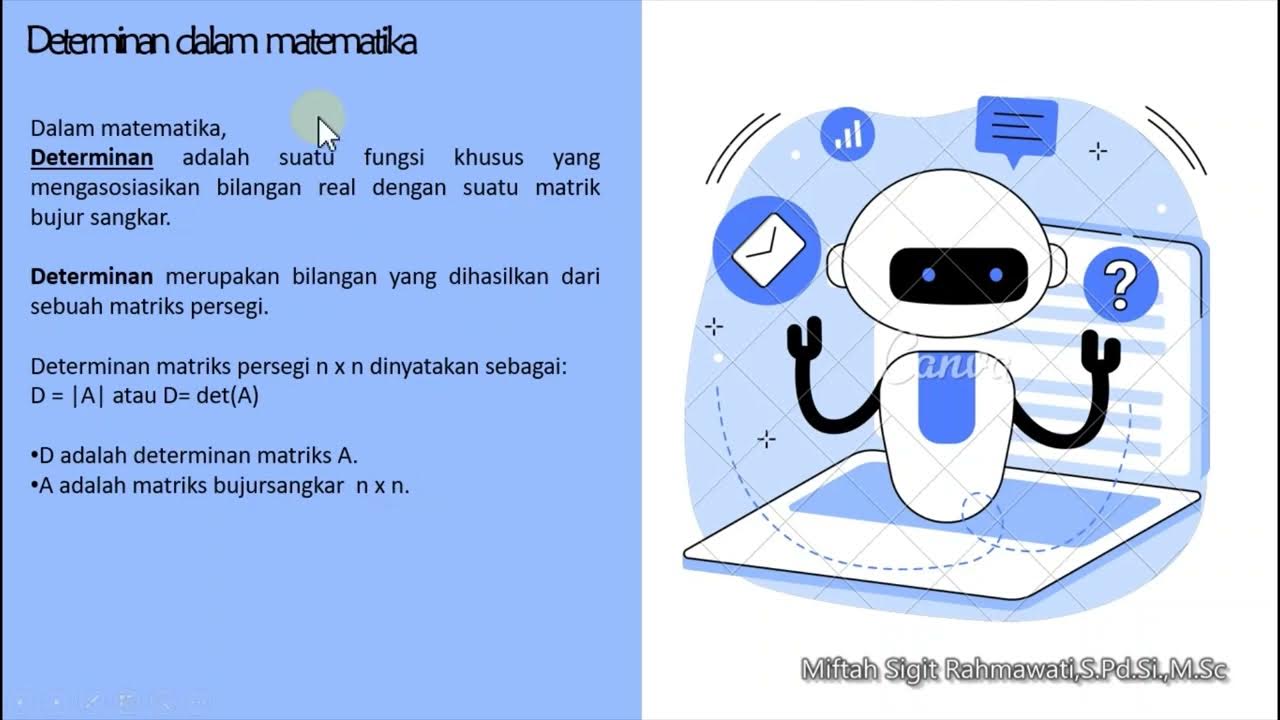Encoding and Decoding
Summary
TLDRThis video lesson introduces students to the fascinating world of encoding and decoding, exploring foundational concepts in cryptography. Key topics include the Caesar cipher, circular coding, and the Emission cipher, all explained through relatable examples like encrypting a name or message. The script also covers the basics of modular arithmetic and encryption processes, helping students understand how messages are securely transformed and transmitted. The lesson is designed to engage learners with hands-on practice activities and real-life applications, from barcodes to passwords, making cryptography both accessible and practical for modern-day use.
Takeaways
- 😀 Codes are symbolic representations of information used to communicate or protect data, and they have existed for thousands of years, such as in Egyptian hieroglyphics and Roman numerals.
- 😀 Common examples of codes include barcodes, QR codes, and identification numbers like ISBN, UPC, and airline ticket numbers.
- 😀 Encryption and decryption are fundamental processes in cryptography, where plaintext is converted into ciphertext (encoded) and vice versa (decoded).
- 😀 The Caesar cipher, a classical encryption method, shifts letters in the alphabet by a set number, making it easy to encrypt and decrypt messages.
- 😀 The Caesar cipher is vulnerable to attacks because of its simplicity, and it is used in various simple coding systems for educational purposes.
- 😀 Modular arithmetic, or modulo, is a key concept used in many ciphers, including the Caesar cipher and circular coding, to find remainders when dividing numbers.
- 😀 Circular or shift ciphers use modular arithmetic to move letters in a cyclic manner, ensuring the encoding wraps around after the letter Z.
- 😀 The Affine cipher is another encryption technique that uses multiplication and modular arithmetic to encode messages, requiring a multiplier that is not a factor of 26.
- 😀 Cryptography is a critical field, and many individuals pursue it in computer science or cybersecurity, though it’s often initially misunderstood in academic contexts.
- 😀 The process of encryption and decryption is crucial for securing sensitive data, such as passwords, and preventing unauthorized access to personal information.
Q & A
What is a code and why is it important?
-A code is a symbolic way to represent information. It is important because it allows us to protect or disguise information, whether for privacy, security, or simply for organization, such as using color-coding in notes or encryption in digital communication.
Can you give examples of codes that have been used historically?
-Yes, examples of historical codes include Egyptian hieroglyphics, the Greek alphabet, Roman numerals, and musical scores. Codes have been used for thousands of years to represent information in various forms.
What are the two types of identification numbers mentioned?
-The two types of identification numbers are numeric IDs, which use digits only, and alphanumeric IDs, which combine letters and numbers.
How does the Universal Product Code (UPC) work?
-The UPC is a code used to identify products universally. It ensures that products are recognized across different countries and systems, such as for items like Kellogg's or Lay's products, regardless of the language used.
How does QR code technology relate to modern smartphones?
-QR codes, or Quick Response codes, can be scanned by smartphones to access information quickly. With the advent of smartphones, QR codes have become a popular method for encoding and accessing information, such as website links or product details.
What is cryptography and how is it used in encoding?
-Cryptography is the process of making and breaking codes. In encoding, it is used to convert plain text into ciphertext (encrypted text) to protect information, and the opposite process, decryption, turns it back into readable text.
Explain the process of a Caesar cipher.
-The Caesar cipher is a simple encryption method where each letter of the plaintext is shifted a fixed number of places forward in the alphabet. For example, with a shift of 3, 'A' becomes 'D', 'B' becomes 'E', and so on. It is easily decrypted by reversing the shift.
What is modular arithmetic and how is it applied in circular or speed coding?
-Modular arithmetic is the process of finding the remainder when one number is divided by another. In circular coding, it is used to shift letters by a specified number in a cyclic manner, such as rotating from 'Z' back to 'A'.
How is the encryption of a message performed using circular coding?
-Circular coding uses modular arithmetic to shift letters of the alphabet by a chosen number. The formula used is C = P + M mod 26, where C is the ciphertext, P is the plaintext, and M is the shift value. The position of each letter is calculated based on this formula.
What is the Emission Cipher and how does it differ from the Caesar cipher?
-The Emission Cipher uses modular arithmetic, but instead of simply shifting letters, it uses multiplication with a key value (K). The formula is C = P × K mod 26. This results in a different encryption system compared to the simpler Caesar cipher, which only involves addition.
Outlines

هذا القسم متوفر فقط للمشتركين. يرجى الترقية للوصول إلى هذه الميزة.
قم بالترقية الآنMindmap

هذا القسم متوفر فقط للمشتركين. يرجى الترقية للوصول إلى هذه الميزة.
قم بالترقية الآنKeywords

هذا القسم متوفر فقط للمشتركين. يرجى الترقية للوصول إلى هذه الميزة.
قم بالترقية الآنHighlights

هذا القسم متوفر فقط للمشتركين. يرجى الترقية للوصول إلى هذه الميزة.
قم بالترقية الآنTranscripts

هذا القسم متوفر فقط للمشتركين. يرجى الترقية للوصول إلى هذه الميزة.
قم بالترقية الآنتصفح المزيد من مقاطع الفيديو ذات الصلة

Nature and Elements of Communication | Module 1

Mathematics in the Modern World 13 - Cryptography, Caesar Cipher, Gerard Butler, & Decimation Cipher

KONSEP DASAR GELOMBANG MEKANIK | Gelombang Mekanik #1 - Fisika Kelas 11

[Bahas Seru] : Bahasa Indonesia-Kelas 2- Keberagaman Benda (Membuat Laporan Sederhana)

Determinan Part 1

Cells: Structures and Functions | Biology
5.0 / 5 (0 votes)
